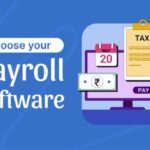
Payroll Software for Contractors (2025): Pricing, 1099 Compliance, Time Tracking & How to Choose
Table of Contents
- Executive Summary
- Who Needs Contractor Payroll Software (and Who Doesn’t)
- Core Features That Actually Matter
- Pricing Models Explained
- Implementation: 30–60–90 Day Plan
- Sample Comparison Table (Feature-by-Feature)
- Evaluation Scorecard (Copy & Use)
- Data & Security Checklist
- Common Mistakes to Avoid
- FAQs
1) Executive Summary
Paying contractors at scale sounds simple—until you juggle W-9 collection, 1099 e-filing, multi-currency payouts, time approvals, and ever-shifting tax thresholds. The right payroll platform automates onboarding, reduces manual errors, and gives finance leaders clean, auditable data. This buyer’s guide is vendor-neutral and gives you a pricing lens, feature checklist, and scorecard to shortlist providers confidently in 2025.
2) Who Needs Contractor Payroll Software (and Who Doesn’t)
Great fit if you:
- Pay 10–10,000+ contractors monthly or on milestones.
- Operate in multiple states/countries (Nexus rules, currency, local regulations).
- Need clean 1099-NEC/1096 filings, audit trails, and self-service portals.
- Want time/expense capture tied to approvals and projects (billable vs. non-billable).
Maybe don’t need it if you:
- Pay ≤5 contractors occasionally via bank transfers and can tolerate manual 1099 prep.
- Work inside an ERP that already covers contractor payouts & year-end forms well.
3) Core Features That Actually Matter
Onboarding & Compliance
- W-9/W-8BEN collection with TIN validation; e-sign and auto-reminders.
- Worker classification guidance (contractor vs. employee) and documentation.
- 1099-NEC e-filing & recipient delivery, bulk actions, and correction workflows.
- Multi-state & multi-country support, local invoice requirements, and document retention.
Payments & Payout Methods
- Direct deposit / ACH / wires; optional instant payouts with fees.
- Multi-currency with transparent FX; fee disclosure per method.
- Scheduled & milestone payments, partial payments, and holdbacks.
- Payment approvals by role, limits, and project codes.
Time, Expenses & Projects
- Time tracking (web/mobile/kiosk), geofencing, PTO (if applicable).
- Expense submission with receipts, policy rules, and approval chains.
- Project codes and cost centers for clean reporting to the GL.
Integrations & Reporting
- Accounting (QuickBooks, Xero, NetSuite) and HRIS/ATS connectors.
- Custom export to CSV/API; real-time dashboards (spend, accruals, late invoices).
- Audit logs and role-based access control.
Support & Operations
- Migration help, onboarding templates, and dedicated CSM on higher tiers.
- SLA clarity (response & resolution), knowledge base, and in-product guidance.
4) Pricing Models Explained – Payroll Software for Contractors
- Per-contractor per month (e.g., $X per active contractor) — predictable for steady rosters.
- Per-payment fees (e.g., % + fixed) — good for variable or seasonal work.
- Add-ons: 1099 e-file bundles, global payouts, instant pay, premium support, custom SSO/SCIM.
Pro tip: Always model a 12-month TCO for three scenarios: baseline headcount, peak season, global expansion. Include FX and same-day/instant fees.
5) Implementation: 30–60–90 Day Plan
Days 1–30 — Prepare & Pilot
- Clean vendor master data; standardize W-9/W-8 status and payment preferences.
- Pilot with one department or 50 contractors; test onboarding, time capture, and a mock 1099 run.
- Map cost centers and GL accounts.
Days 31–60 — Expand & Automate
- Roll to all teams; enforce approval workflows and policy rules.
- Integrate accounting/HRIS; enable scheduled payouts and project codes.
- Build dashboards for spend by project/state and late invoice alerts.
Days 61–90 — Optimize & Lock Controls
- Turn on TIN match, automated 1099 drafts, and recipient delivery.
- Quarterly reviews: worker classification, data access, and audit findings.
- Negotiate payment rails: lower FX, bulk fees, or faster settlement where needed.
6) Sample Comparison Table (Feature-by-Feature)
(Replace “Vendor A/B/C” with your shortlist.)
| Capability | Vendor A | Vendor B | Vendor C |
|---|---|---|---|
| W-9/W-8BEN e-collect + TIN match | ✓ | ✓ | Partial |
| 1099-NEC e-file & corrections | ✓ | ✓ | ✓ |
| Multi-currency payouts | ✓ | Add-on | ✓ |
| Instant payouts (card/wallet) | Add-on | ✓ | ✓ |
| Time & expense with approvals | ✓ | ✓ | Partial |
| Accounting integrations (QBO/Xero/NetSuite) | ✓ | ✓ | ✓ |
| API & webhooks | ✓ | ✓ | Partial |
| Role-based access & audit logs | ✓ | ✓ | ✓ |
| Global contractor support | ✓ | Partial | ✓ |
| SLA (24×7) | Premium | Standard | Premium |
| Pricing model | Per-contractor | Per-payment | Hybrid |
7) Evaluation Scorecard (Copy & Use)
Weight to 100 points:
| Pillar | Weight | What to Verify |
|---|---|---|
| Compliance & 1099s | 25 | W-9/W-8BEN, TIN match, e-file, corrections, audit trail |
| Payments & Global | 20 | ACH/wire/instant, FX clarity, settlement times |
| Time/Expense & Projects | 15 | Mobile time, approvals, cost centers, invoice ties |
| Integrations & Data | 15 | Accounting/HRIS, API, exports, data freshness |
| Security & Access | 10 | RBAC, SSO/SCIM, encryption, SOC2/ISO |
| Support & SLA | 10 | Response/resolution SLAs, CSM, migration help |
| Pricing/TCO | 5 | 12-mo scenarios, add-ons, FX/instant fees |
Score each vendor 1–5 per row × weight.
8) Data & Security Checklist
- SOC 2 Type II / ISO 27001 reports, data retention policy, breach response.
- Encryption at rest and in transit; tokenized PII where possible.
- SSO/SCIM for access lifecycle; detailed audit logs.
- Least-privilege roles; separate duties for approvals vs. payouts.
- Bank-grade rails with redundancy; vendor risk assessments annually.
9) Common Mistakes to Avoid
- Treating contractors like employees in the system without classification controls.
- Ignoring TIN validation—leads to 1099 corrections and penalties.
- Underestimating FX/instant payout fees in TCO models.
- Skipping pilot approvals—then discovering policy gaps post-go-live.
- Relying on manual spreadsheets after rollout (breaks audit trail).
10) FAQs – Payroll Software for Contractors
Q1: What’s the difference between W-9 and 1099-NEC?
A: W-9 collects the contractor’s taxpayer info (TIN). 1099-NEC reports annual non-employee compensation to the IRS and the contractor.
Q2: Can payroll software prevent contractor misclassification?
A: It can’t make legal determinations, but it helps enforce documentation and workflows (e.g., contracts, scopes, approvals) that support proper classification.
Q3: Do I need time tracking if contractors invoice us?
A: Not always, but time & approvals give cleaner project cost data and detect scope creep early.
Q4: How soon can contractors get paid?
A: Standard ACH is 2–3 business days; some platforms offer same-day/instant payouts with fees. International wires vary by corridor.
Q5: What’s the typical cost?
A: Expect per-contractor monthly fees or per-payment pricing, plus add-ons for e-file bundles, global payouts, and premium support.

















